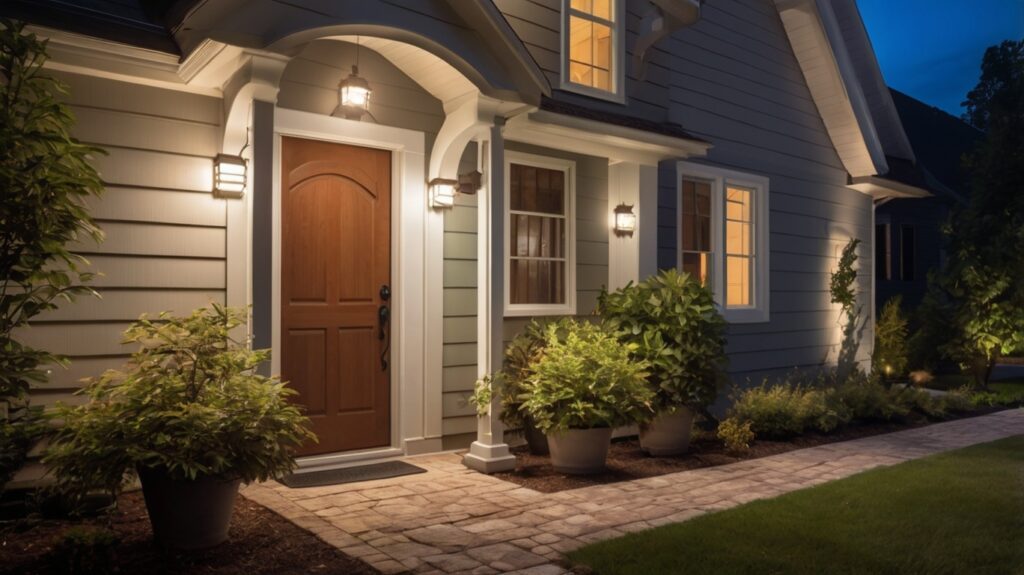Table of Contents
- Introduction
- Benefits of Motion-Activated Lights
- Best Places to Install Motion-Sensor Lights
- How to Choose the Right Motion-Activated Lights
- Installation Tips for Motion-Sensor Lighting
- Conclusion
- FAQs
Introduction
Motion-activated lights are an innovative lighting solution that combines convenience, energy efficiency, and security. By automatically turning on when motion is detected, these lights ensure well-lit pathways, deter intruders, and reduce electricity consumption. Whether for indoor spaces like hallways and stairs or outdoor areas such as driveways and gardens, motion-sensor lighting offers a smart and practical upgrade to any home or business.

Benefits of Motion-Activated Lights
1. Enhanced Security
Motion-activated lights deter potential intruders by illuminating dark areas when movement is detected, making properties less vulnerable to break-ins.
2. Energy Efficiency
Since these lights only activate when needed, they significantly reduce energy waste compared to traditional always-on lighting.
3. Convenience
No more fumbling for light switches—motion sensors provide instant illumination in hallways, staircases, and other high-traffic areas.
4. Extended Bulb Lifespan
With reduced usage, motion-activated LED bulbs last longer, lowering maintenance costs.
Best Places to Install Motion-Sensor Lights
1. Hallways & Staircases
Prevent accidents by ensuring these areas are well-lit when someone passes through.
2. Outdoor Entryways (Porches, Driveways)
Improve visibility and security by lighting up pathways when someone approaches.
3. Garages & Sheds
Illuminate workspaces only when in use, enhancing safety and efficiency.
4. Backyards & Gardens
Deter wildlife and intruders while providing safe navigation at night.
How to Choose the Right Motion-Activated Lights
- Detection Range: Select sensors with adequate coverage (e.g., 180° or 360°).
- Sensitivity Settings: Adjustable sensors prevent false triggers from pets or wind.
- Light Duration: Choose models with customizable timer settings (e.g., 30 sec to 10 min).
- Power Source: Options include wired, battery-powered, or solar-powered lights.
- Weather Resistance (for outdoor use): Look for IP65 or higher-rated fixtures.
Installation Tips for Motion-Sensor Lighting
- Position Sensors Correctly: Install at optimal height (6-10 feet) for best detection.
- Avoid Obstructions: Ensure no objects block the sensor’s field of view.
- Test Before Final Setup: Adjust sensitivity and range to minimize false activations.
- Use LED Bulbs: They are energy-efficient and long-lasting.
Conclusion
Motion-activated lights provide a perfect blend of security, convenience, and energy savings. By strategically installing them in key areas like hallways, stairs, and outdoor spaces, homeowners can enhance safety while reducing electricity costs. With various models available, choosing the right sensor and placement ensures optimal performance.
FAQs
1. Do motion-activated lights work in daylight?
Most modern sensors have daylight detection, preventing activation during daytime.
2. Can pets trigger motion-sensor lights?
Some models feature pet-immune technology to avoid false triggers from small animals.
3. How long do motion-sensor lights stay on?
Duration varies (typically 30 sec to 10 min), with adjustable settings on many models.
4. Are solar-powered motion lights effective?
Yes, they work well in areas with sufficient sunlight but may require backup in cloudy regions.
5. Can I install motion-sensor lights myself?
Yes, many models are DIY-friendly, but hardwired installations may require an electrician.